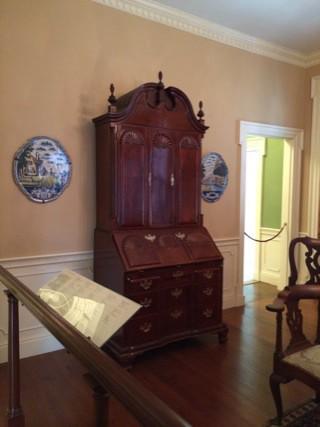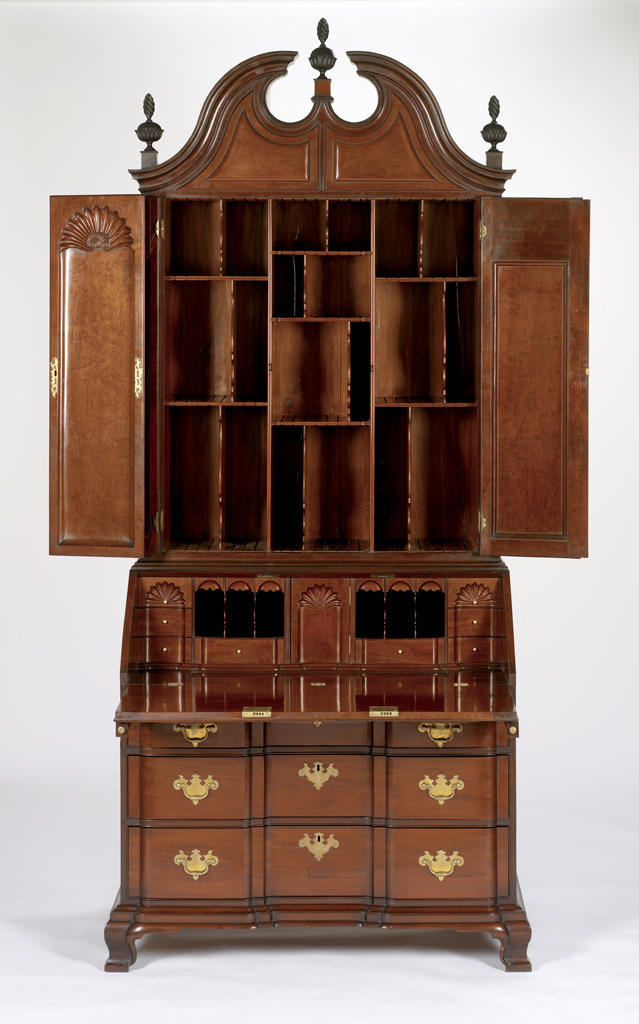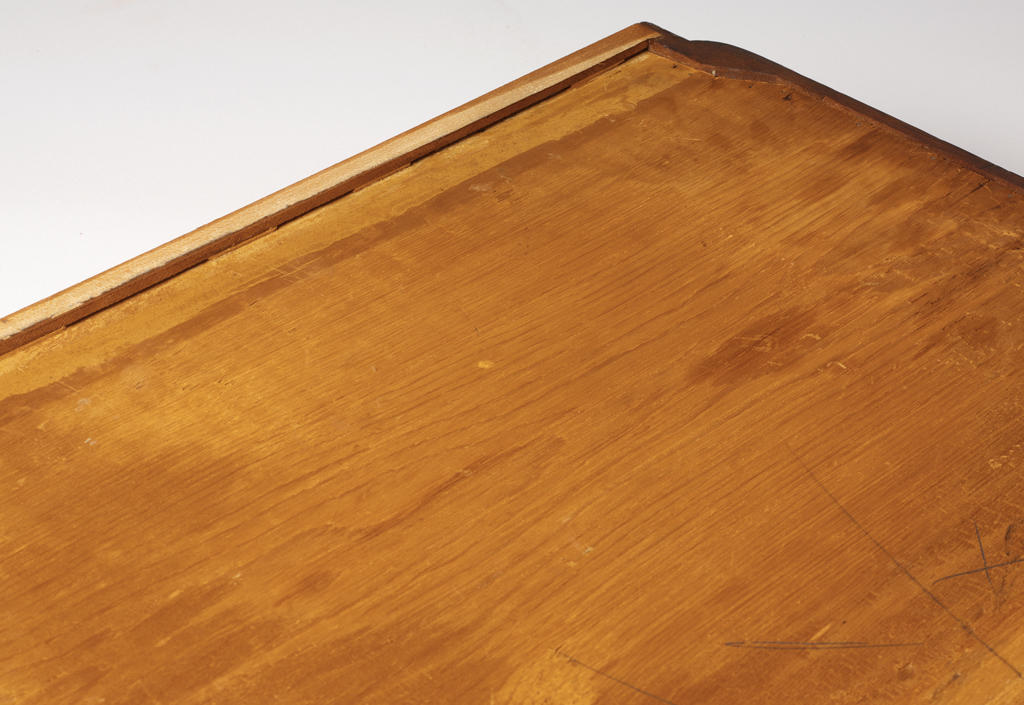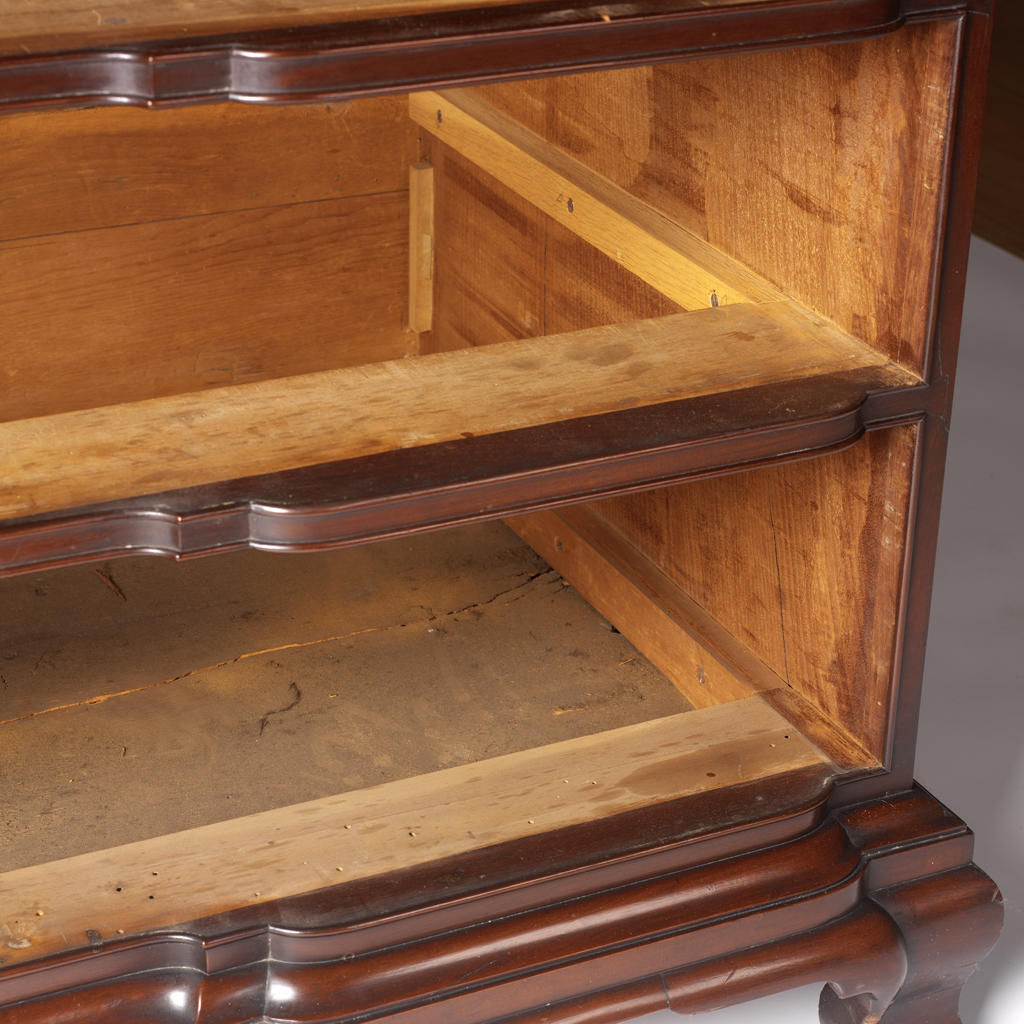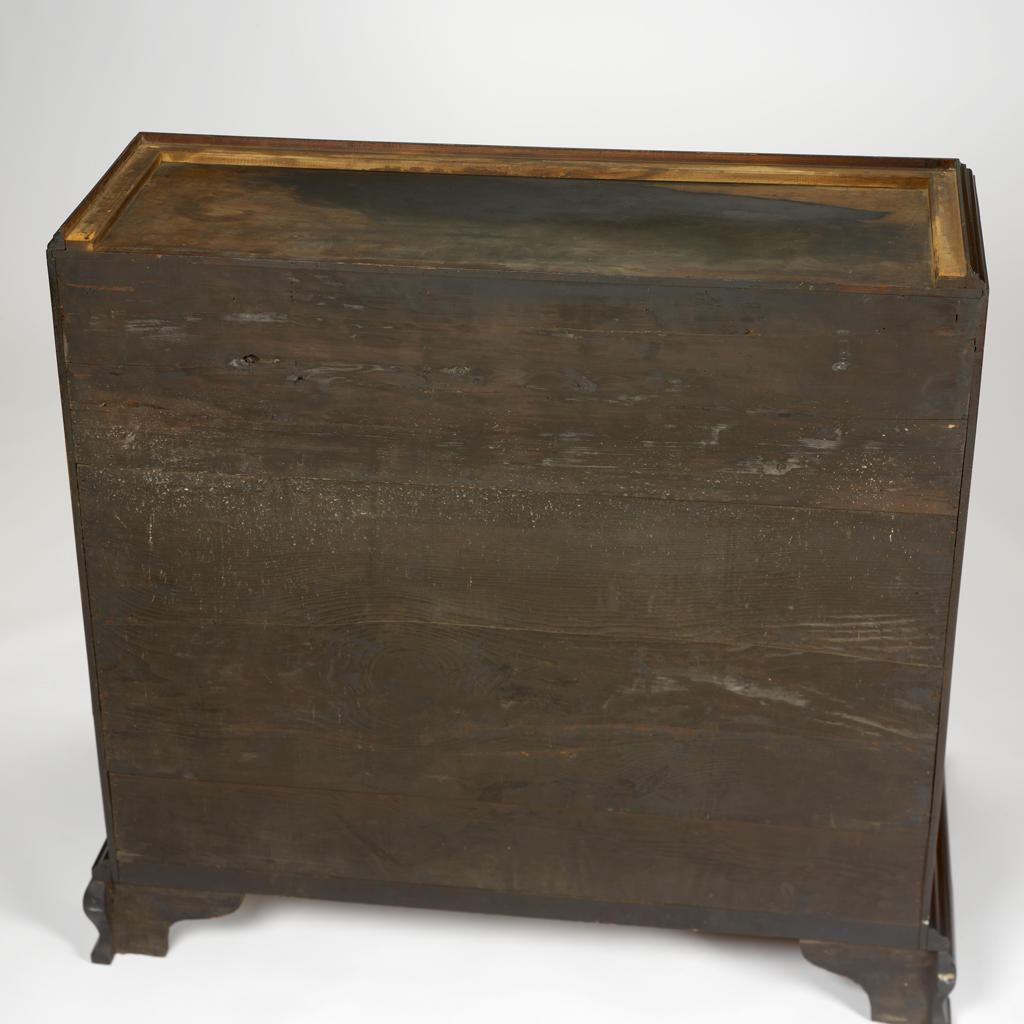A wooden “do not touch” partition usually separates the period room in Pendleton House from the public. But one Monday in June, that partition was removed, and museum staff peopled the room. Two researchers from Yale University had come to study examples of Rhode Island furniture from RISD’s collection. The desk and bookcase in this room, associated with the Goddard/Townsend family of cabinetmakers in Newport, was among the list of pieces they hoped to study in detail. The elegant piece, which usually leaned against the wall, had been pushed into the room’s center.
The researchers meticulously examined the entirety of its mahogany surface, from the decorative carved shells to the delicate brass hardware. They opened the doors of the bookcase, revealing variously sized compartments, shelves, and movable dividers. They scrutinized each individual drawer, noting its construction and the type of wood from which it had been made. Occasionally they would discover a graphite number on the interior of a drawer, scribbled by a cabinetmaker to indicate its place within the desk. They even examined the back and the base of the piece, both of which were made from rougher, plainer boards.
The process took nearly all day, but as I watched the Goddard piece being taken apart and reassembled, I understood it more deeply. I found that I was better able to conceptualize the process of its manufacture. Minor structural irregularities and graphite markings told of the individuals who had crafted everything from the dovetail joints to the gleaming finish. And the signs of wear on the drawers told me that it had been part of someone’s daily life as a personal office, safe, and library. The narratives of both makers and users are contained within the piece.
As fascinating as learning about the Goddard desk and bookcase was, most of my work this summer has not involved furniture. Rather, my major project at the Museum has been to help the decorative arts curator, Elizabeth Williams, as she reinstalls the Porcelain Gallery. Researching the 18th-century European porcelain figures that will populate the gallery, I have discovered that there are other ways in which objects tell stories.
While observing minute details in the Goddard piece taught me that large objects can tell small stories, researching the porcelain figures has taught me that small objects can tell large stories. Only the wealthy of Europe could afford porcelain, and the process of examining, researching, and writing about the porcelain figures has given me a deeper understanding of the values and tastes of the 18th-century elite, who favored the figures as table decorations to accent glittering silverware and expensive desserts. Porcelain Harlequins and Columbines told of the popularity of the Italian commedia dell’arte as a subject in 18th-century art, and chinoiserie and turquerie figures told of European misconceptions of other cultures. From the figures of shepherds and shepherdesses I learned about paintings by Watteau and Boucher, and the interest of courtiers in idyllic pastoral scenes. I even learned about the life of Joseph Fröhlich, a jester in the Saxon court, whose likeness was frequently rendered in porcelain. Painted decorations of birds and insects on coffee, tea, and chocolate services spoke of a deepening interest in the natural world among the educated of Europe in the 1700s.
And so, while the anatomy of the enormous wooden desk refined my understanding of the microcosmic story of those who crafted it and used it, the porcelain figures have unveiled the cultural macrocosm of the 18th-century European aristocracy. Although all art contains information about historical context, decorative arts objects can reveal information about people. They are cultural collaborators, not passive witnesses. The Goddard desk was made to be placed in a home and used by an individual, so we see the individual in it. The porcelain figures were made to be table decorations for the wealthy of Europe; they tell us about the attitude of that particular demographic. Because decorative arts objects are so closely entwined with lived experience, the stories they have to tell about individuals and cultures are both authentic and multi-layered.
Now, when I walk through Pendleton House and see the Goddard desk and bookcase, I see it differently. I no longer think of it as a beautiful but anonymous piece of furniture, but rather as an object with a story to tell. It is now more dimensional, more human, and more interesting to me. And as we move past the research stage of the Porcelain Gallery reinstallation and begin to place the figures in their cases, I find that I look at the porcelain figures differently as well. They are no longer simply depictions of shepherds and shepherdesses, hunters, dancers, or musicians— they are objects that narrate stories about the ideas, values, and beliefs of 18th-century European aristocrats.
Naomi Subotnick, Stanford University BA, 2017
Andrew W. Mellon Summer Intern, 2014

